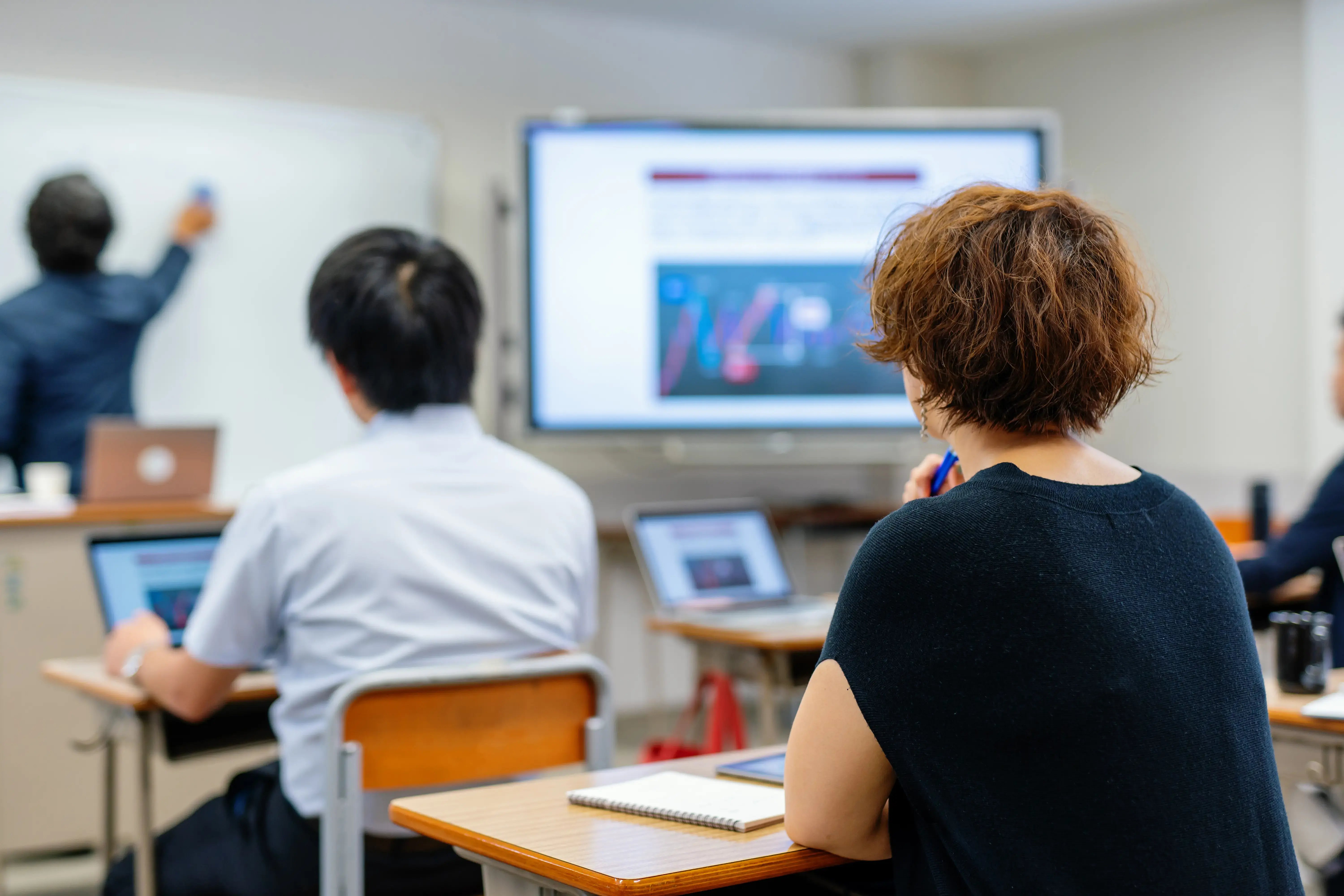Few presentation environments are more demanding than higher education. Colleges and universities have a large, mobile set of visitors and a rich set of use cases — from small classrooms to large lecture halls to auditoriums and stadiums for esports and other large events. These diverse requirements leave educators with a broad array of educational technology needs, especially when it comes to AV tech. They need ed tech systems that support various visual learning experiences for large groups of people with different needs.
Panasonic has a rich history in supporting higher education environments with ed tech solutions that capture the audience's attention and keep them engaged. Here are five real-world examples of how universities have successfully leveraged Panasonic AV technology to enhance learning, improve accessibility, and elevate the student experience across campus.
1. Educational Technology for Seamless Hybrid Learning at Scale
No one likes it when students are absent from class. In 2020, that became a necessity at universities around the world. When COVID-19 knocked the world sideways early that year, Southern California's Pepperdine University needed to craft a fully remote learning environment in time for the fall session.
To support this rapid transition, Panasonic partnered with the university, delivering PTZ camera technology that seamlessly integrated into Pepperdine’s hybrid classroom model to ensure high-quality visual learning. Pepperdine chose the AW-HE38H PTZ cameras with 22x zoom. The camera's level of visual acuity is excellent for capturing fine detail on lecture hall screens, while its ability to tilt and zoom keeps even the most pacing-prone professors at the center of the action. USB and power over Ethernet made the cameras easy to install, providing built-in recording capabilities to capture lecturer and student insights.
Standardizing on these cameras provided every classroom with the same consistent experience, explained Dr. Jared Mukai, the university's Manager of AV Technologies and Special Projects. "No matter where you're teaching, you could walk into the room and it was going to feel the same as every other space," he says.
2. Superior Classroom Audio
Lecture halls need crisp, high-quality audio pickup to support both hybrid and in-person instruction — and lecturers prefer the solution to be wireless so they can teach without disruption. That's why Virginia Tech used Panasonic's WX-AM800 Ceiling Microphone and WX-AU202 Antenna Receiver to elevate its audio.
The University installed 44 microphones across key education spaces. The microphones use built-in digital signal processors to concentrate sound, targeting teacher and student voices while eliminating ambient noise. They also integrate seamlessly with Panasonic PTZ cameras. "It just works," said Rob Byers, Director of AV Services. "And that means we don't get phone calls."

3. Broadcast-Quality Ed Tech and Esports Production
Events in higher ed institutions are becoming more sophisticated and spectacular. Esports events, with their dazzling, fast-moving, technology-supported content, are a case in point. But these events need live video production support to really shine.
Ferris State University in Big Rapids, Michigan, chose Panasonic's KAIROS live video production system, with its flexible inputs and professional-level video switching and streaming, to outfit its Center for Virtual Learning.
"KAIROS is like a Swiss Army knife for television production," said the University's esports program lead, explaining that the solution uses over 30 live input sources when processing live broadcasts, competitive gaming events, and curriculum delivery. KAIROS also supports remote access, enabling students to learn broadcast workflows as part of their studies.
4. Interference-Free Wireless Audio Empowers Educators
One of the biggest challenges for wireless audio in higher ed is the dense nature of academic environments. Positioning multiple radio microphones in close proximity can create audio interference for sub-standard equipment.
Panasonic's Digital Wireless Microphone System uses DECT 1.9GHz radio technology to keep audio clear even on the most crowded airwaves. The University of Michigan's Ross School of Business found it invaluable in preventing cross-talk in multi-floor buildings.
This advanced AV technology allows lecturers to use lightweight body packs and wireless microphones to move nimbly around the room while audio stays crystal clear for students. "Panasonic's wireless body packs are among the lightest in the industry… and it had to be easy for faculty to use and IT to support," said Chris Visel, Director of AV Infrastructure at Ferris State.
5. Simple Integration and Total Control
It isn't enough for complex higher ed environments to flood their premises with high-quality AV tech. Educational technology must also be easy to control.
Virginia Tech's AV technology implementation uses plug-and-play MicCC software to control its ceiling mics, antennas, and PTZ cameras via a single interface. The unified system eliminates the need for manual mic pairing, making setup far easier. "With the plug-and-play ease of the software, it doesn't take much time at all to get your room up and running," said Eric Brooks, audio engineer at the University.
Educational Technology For Powerful Learning Solutions
Panasonic's interoperable, centrally controllable equipment is key to building educational environments that support high-quality visual learning with superior clarity audio. Visit our AV Solutions for Education page to learn more about how Panasonic can help boost learning outcomes with future-proof AV tech solutions in your higher ed environment.
